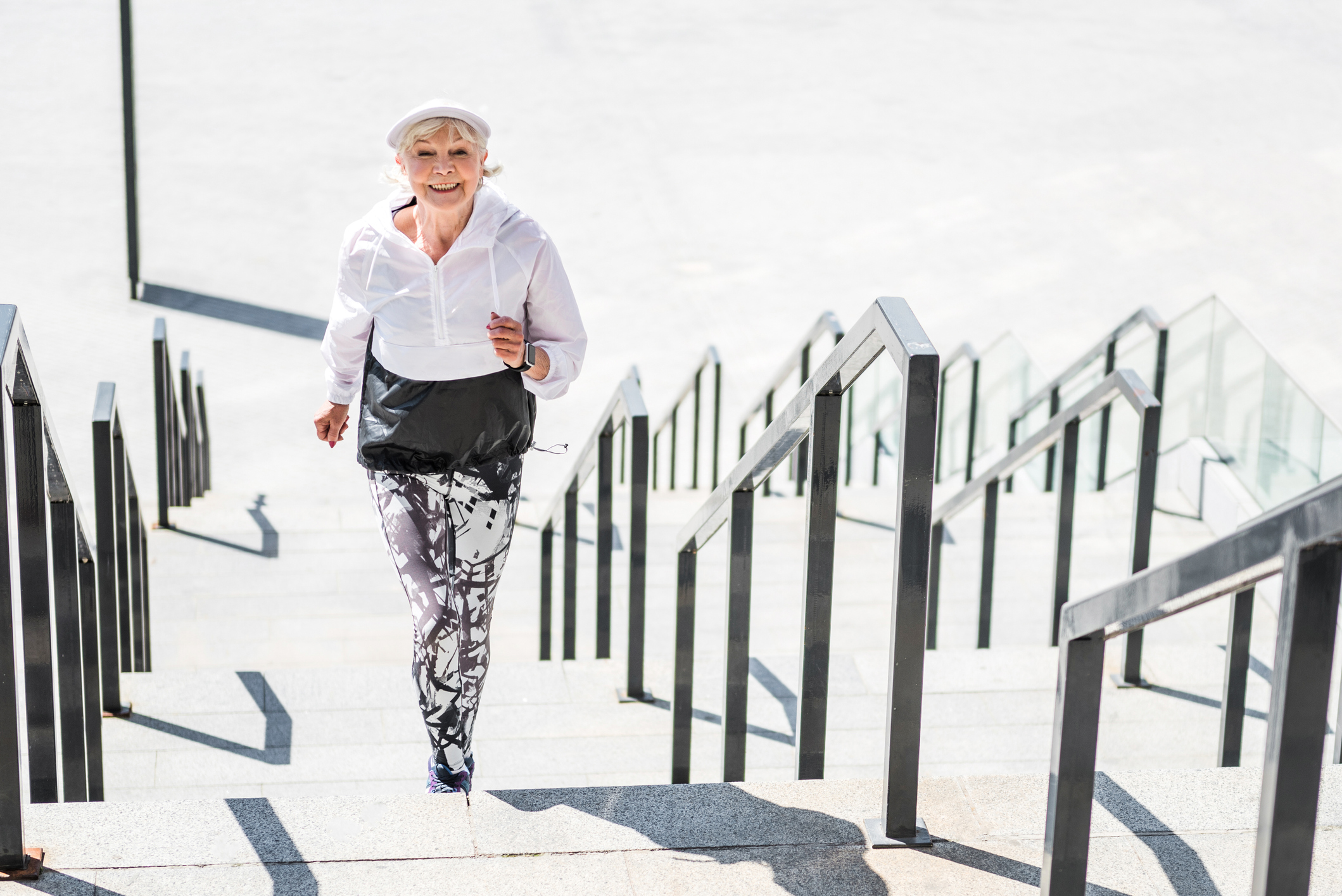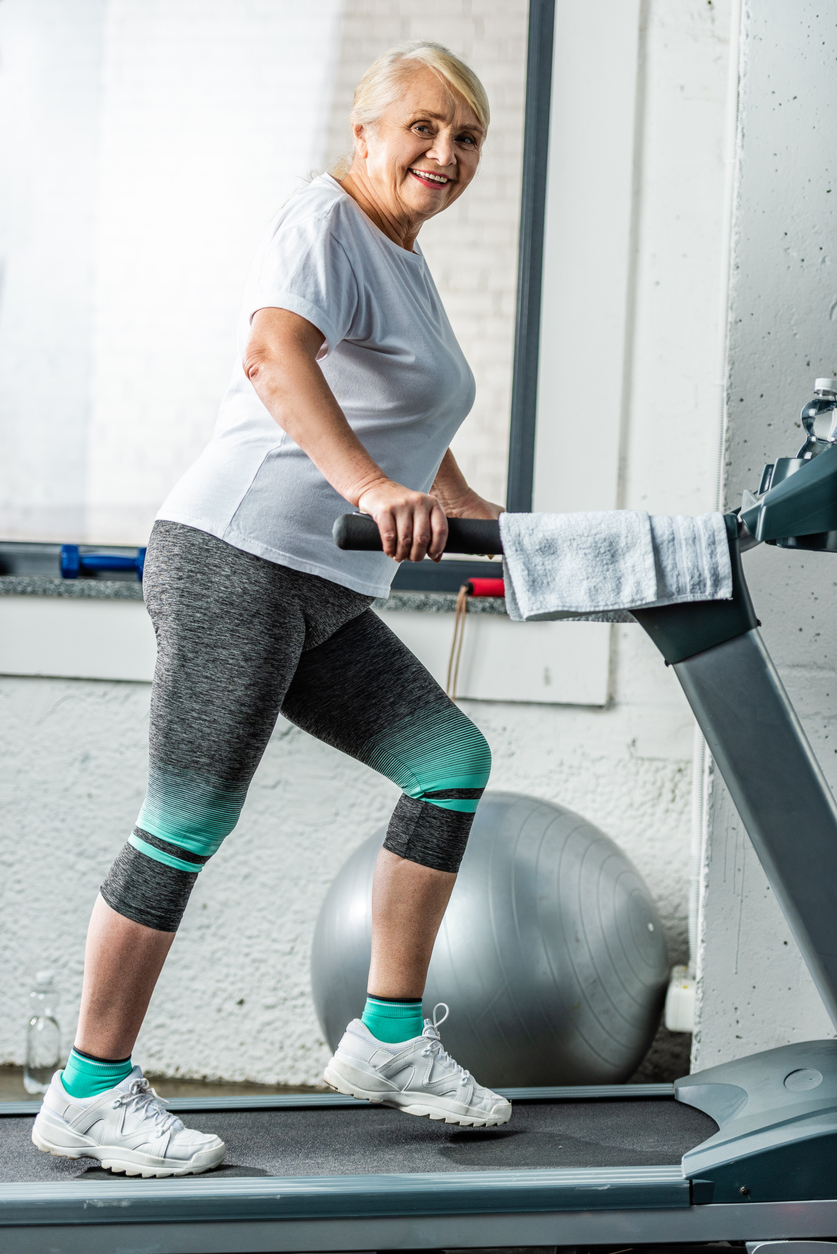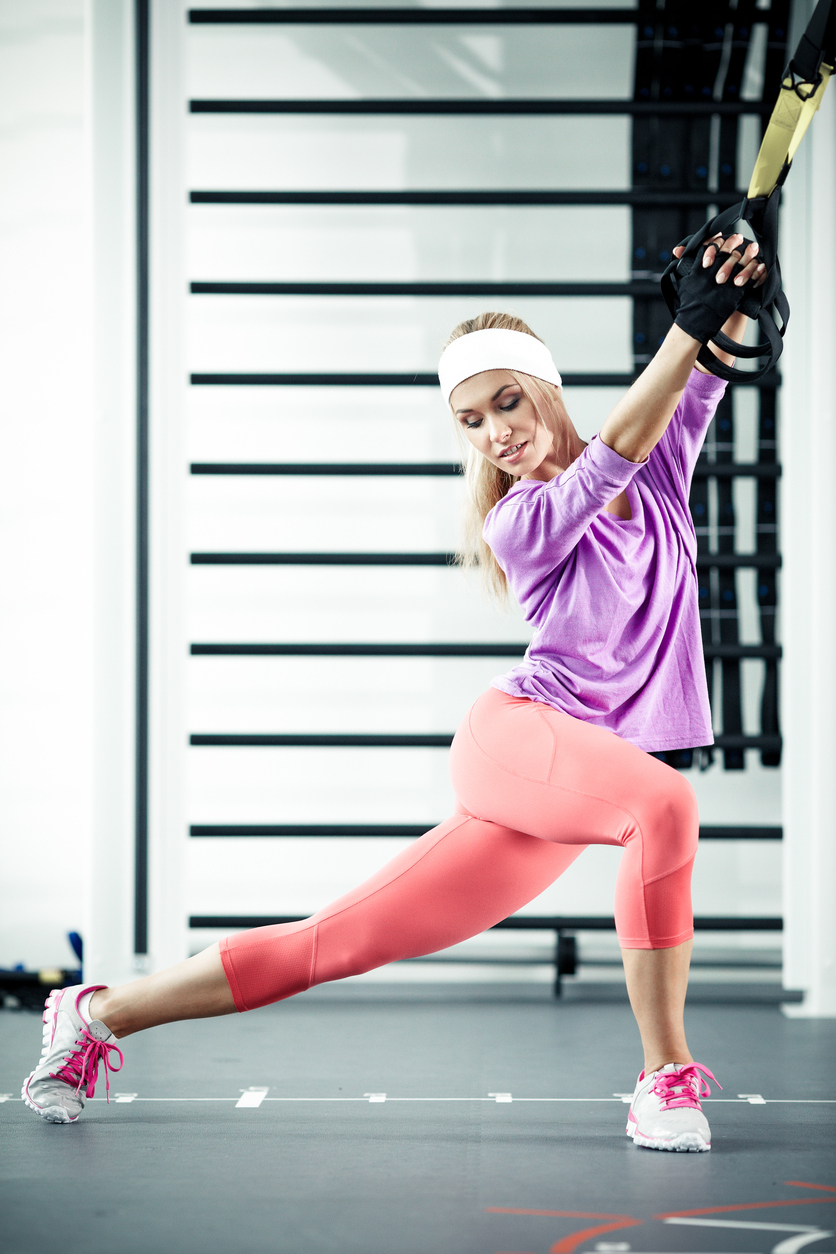
KNEE BREAKER OF THE MONTH: CURTSY LUNGES
Chefs always say you can’t produce good food without great ingredients. The same goes for good fitness development – you need great exercises as essential ingredients – and it’s really important to avoid risky and time-wasting exercises. That’s why I’ve posted on some time-wasting exercises here and here, as well as a popular but dangerous back-breaking exercise here. This post I’m covering a risky knee-breaker, the curtsy lunge (CL).
The CL is a variation of a step back lunge (SBL)* with the trailing leg stepping back and across like the headline photo (video here). The CL is quite popular with women because it’s perceived as being a more effective conditioner for the butt/hips compared to a standard SBL. The extra effectiveness of the CL is an urban myth, but it does have an element of danger that the SBL doesn’t have, so that’s why it’s our knee-breaker of the month. Others have also called out the CL’s risky qualities as well – see here, here and here.
View the headline photo or CL video and focus on the front leg: note how far to the side the thigh ends up compared to the knee/lower leg. If you wanted to design a knee-breaking exercise, the CL would be ideal since you’re using your upper leg like a torque wrench on your knee. This torqueing pushes the knee into a vulnerable/dangerous valgus position which is a well-known mechanism for serious knee injuries – particularly for women.
VALGUS STRESS AS A MECHANISM FOR KNEE INJURY
Valgus positional stress – an inward knee position or a force that causes an inward knee position – is a well- established and accepted mechanism for serious knee injury, particularly for women and girls. If you have bad luck with valgus stress, it typically blows out the knee with a “terrible triad” injury – simultaneous damage to anterior cruciate ligament, medial collateral ligament and meniscus – it sounds really bad and it is really bad.
Almost without exception, once you damage your anterior cruciate ligament your knee is never the same. Although modern orthopedic medicine has gotten really good at surgical repair, early-onset arthritis is almost a certainty and will lead to further pain, dysfunction and, often, knee replacement at a relatively young age.
The inability to control dysfunctional valgus positioning is one of the most common dynamic stability issues I see in my practice – indeed many of my clients require corrective exercise to improve valgus control – and this common lack of valgus control has been postulated as a factor in an epidemic of anterior cruciate injuries in young women and girls active in certain competitive sports.
Considered in this light, the CL is an insane exercise choice since you’re voluntarily placing your knee into an extreme valgus position, tempting valgus stress fate, and basically begging for a knee injury. And let’s not forget you’re also feeding into and encouraging a position that many people already have trouble controlling in the first place. As if that’s not enough, there’s one more negative aspect of the CL: you’re creating chronic knee micro-trauma (incremental micro-damage) with each repetition!
CHRONIC MICRO-TRAUMA
Chronic micro-trauma is incremental tissue damage – physical self-abuse – and is a major contributor to adult pain and injury to spine, shoulders, hips and knees. I’ve talked about chronic low back trauma a bit here as it relates to low back pain.
Micro-trauma strike one: It’s very ironic that, anatomically, women are less suited to perform the CL, yet they are the ones I always see doing it. ** Micro-trauma strike two: If you are one of many walking around with less than perfect valgus control and positioning, you are creating chronic trauma to your knees 24/7, even before adding a stressful exercise like the CL. Include the CL in your workouts and that could be chronic micro-trauma strike three: enough to wear out your knee joints prematurely or make them unstable and more susceptible to injury and dysfunction down the road.
You might not blow out your knee the first time or even the hundredth time you perform a CL, but with each repetition you are subjecting your knee to unneeded chronic trauma. Why subject yourself to these risks when there are plenty of other safer exercises to consider?
CL VARIATIONS AND OTHER SIMILAR KNEE-STRESSING EXERCISES TO AVOID
To have a smoother fitness path, it’s best to always consider what can go wrong with an exercise by evaluating risk/benefit before adding it to your play list. To get penciled in, the potential benefits of an exercise should greatly outweigh any risks.
For almost all of us, and particularly the over-50/senior set, the CL is absurdly risky with no value-added benefit compared to the much safer split squat or SBL, so risk/benefit will never pencil out favorably***.
Note the exercises below all “torque-wrench” your knee without any value-added benefit, so you should avoid them.
- The TRX CL like the headline photo.
- Although not a CL per se, another similar exercise is the cross-over step up.
- Using a climbing Step Mill (a treadmill with steps) by standing/climbing side-ways to the step rather than front-on – it’s basically a cross-over step up for the leg farthest away from the step – and consider you’ll likely repeat this knee insult hundreds of times each Step Mill session if you use the side-ways climbing technique.
- A particularly alarming CL variation is to increase the dynamic aspect of a CL by hopping/jumping vertically out of the bottom (max knee bend) position. This practice exponentially increases the torqueing/twisting forces on the knee and therefore the injury risk potential.
- Another CL variation is the sand bag “double cross”: you throw a handled sandbag across your body/front leg in the opposite direction of your trailing leg as you drop down into the bottom position of the CL.
Lastly, please note that all of the following factors/actions escalate CL risk by escalating the stressful torqueing/twisting forces on your knee: a) the more laterally you step; b) the deeper you bend your knee; c) the more weight/resistance you use; d) the more dynamically you perform the CL.
SPLIT SQUAT AND A STEP BACK LUNGE PROGRESSION FOR SENIORS
I refer to the SBL* a lot in this post. If you’re a senior, there is no reason you “need” to perform a SBL. Sure, it’s a great exercise if you can do it properly with joint and tissue-respecting techniques, but the reality is most of my senior clients stick with a standard split squat.
The stride position is a basic position of movement and the position you perform a split squat in, so everyone, including seniors, should look to master the body-weight split squat if at all possible. But you need to be able to jump-through-the-hoops of proper and safe progression to ensure you have the required range-of-motion, stability, strength and motor control to minimize the chance for any chronic micro-trauma.
Below is a basic three-step progression to prepare you to perform the SBL. The split squat is step three and the landing place for most seniors.
First, be sure you have mastered a hip-hinge-dominant parallel-stance squat and can perform it with some confidence and ease. The parallel-stance squat is like repeating sit-to-stand and stand-to-sit and is the most basic level-changing pattern. Your squats don’t have to be particularly deep (i.e. butt low to ground), but they do need to be cleanly repeatable with good hip-dominant form.
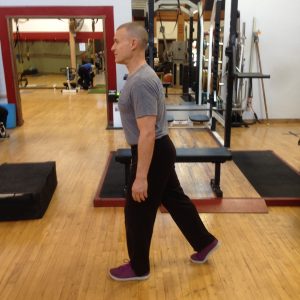
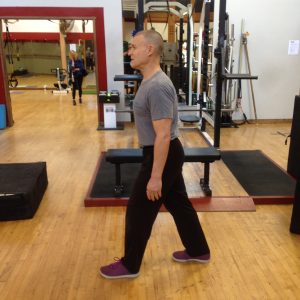
Second, be sure you are rock-solidly stable in a stride stance position; i.e., standing with your legs/feet separated in the front-to-back direction with 90 percent of your body weight on your front leg. The split/stride stance is a balance-challenging position and seniors often find the position takes some getting used to initially. Take your time, practice with a safe balance aid like a wall, chair or rail next to you until you can stand in a split stance position for at least 60 seconds with no balance/body control hiccups.
Third, master a shallow range-of-motion split squat (back knee lightly touching 2 or 3 Airex pads stacked on top of each other). Next master a split squat with depth – at least to where your back knee can lightly touch a 2.5 inch-thick Airex pad.
It’s very important to note that you have no business trying a SBL if you don’t have the range-of-motion, motor control or strength to perform 20 slow, controlled and consecutive body-weight split squats with depth. And if you can’t do that, it’s really OK, because there is nothing wrong with doing your best version of the split squat forever. But, if you aspire to the SBL, do the work first to have a positive experience and not abuse your body.
*The lunge family has lots of items on the menu, but the basics include, in rough order of difficulty, the split squat, SBL, lateral lunge, walking lunge and forward lunge – note I rarely, if ever, see seniors performing the forward lunge properly – for most it’s a time-waster and likely a chronic-micro-trauma inducing activity.
**Women have a greater Q angle (the angle with which the thigh bone joins the knee) which naturally places more valgus stress on their knees compared to men.

